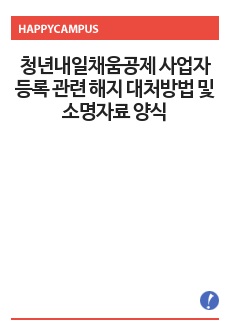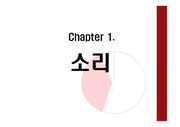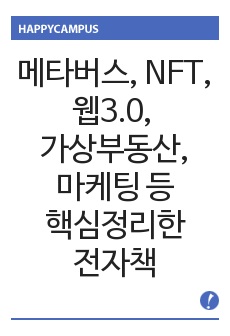성격5요인과 직무스트레스, 직무만족, 이직의도 이론적배경 정리
*현*
다운로드
장바구니
목차
1. 성격의 5요인(Big Five)1) 성격의 정의
2) 5요인 성격이론
2. 직무 스트레스
1) 직무스트레스의 정의
2) 직무스트레스의 발생 요인
3. 직무 만족
4. 이직 의도
5. 성격과 직무스트레스와의 관계
6. 직무스트레스와 직무 만족과의 관계
7. 성격과 이직의도와의 관계
본문내용
1. 성격의 5요인(Big Five)1) 성격의 정의
성격이라는 용어에 대한 정의는 많지만 보편적으로 받아들여지고 있는 단일한 정의는 없다. Phares(1984)는 성격을 지속적이며 한 개인을 다른 사람과 구별해주는 특징적인 사고, 감정 및 행동양식이라고 하였고, Guilford(1959)는 한 개인이 가지고 있는 특성들의 독특한 양식이라고 하였다. 여러 학자들의 정의를 종합해보면, 성격이란 사람들에게서 지속적이고 일관되게 나타나는 행동에 의해 구성되는 안정적인 요인들, 또는 일정한 상황에서 다른 사람과는 명확하게 구분되는 행동 특성을 말한다. 이렇게 일관성 있고 안정된 개인차인 성격을 규명함으로써 우리는 개인을 설명할 수 있고, 미래의 행동을 예측할 수 있다.
2) 5요인 성격이론
연구자들은 그동안 성격을 기술하는 데 사용해야 하는 성격차원에 대해서 상당히 불일치하였다. 그러나 최근에는 영어 특성 형용사들을 사용한 평정으로부터 나온 성격의 다섯 차원(Goldberg, 1992; McCrae & Costa, 1999)에 초점을 둔 모형이 많은 연구자들 사이에서 지지받고 있다. 이후에 이루어진 여러 연구들은 5요인 모형의 확고함에 대한 광범위한 경험적인 증거들을 제공하였다(예, McCrae & Costa, 1997, 1999). 현재 연구자들 간에는 “성격 5요인(Big Five)”이라 부르는 성격 요인들로 구분된다고 합의되고 있다. 이 다섯 가지 요인의 명칭은 학자들에 따라 다소 차이가 있기는 하지만, 외향성(Extraversion), 원만성(Agreeableness), 성실성(Conscientiousness), 신경증(Neuroticism)/정서적 안정성, 경험에의 개방성(Openness to experience)으로 분류된다.
첫 번째 요인은 외향성(Extroversion)으로 다른 사람들과의 교제나 상호작용을 원하고 타인의 관심을 끌고자 하는 정도를 나타내며, 사회적 상황이나 대인관계에서의 기본 성향으로 사회적 적응성에 영향을 미친다. 이 척도가 높은 사람들은 적극적이고, 사교적이고, 활동적이며, 열성적이고 낙천적이다.
참고 자료
김은정, 유태용 (2004). 외식 서비스업 종사자의 직무관련변인과 성격특성이 이직의도에 미치는 영향. 「한국심리학회지: 산업 및 조직」, 17(3), 355-373.최인옥, 노명화, 배범수 (2009). 개인의 성격과 이직의도의 관계에서 사회적 관계특성의 매개효과. 「인적자원관리연구」, 16(2), 245-266.
Avey, J. B., Luthans, F. & Jensen, S. M. (2009). Psychological capital: A positive resource for combating employee stress and turnover, Human resource management, 48(5), 677-693
Barrick, M. R., & Mount, M. K.(1991). The big five personality dimensions and job performance; A meta-analysis. Personnel psychology, 44, 1-26
Barrick, M. R., & Zimmerman, R. D. (2005). Reducing voluntary, avoidable turnover through selection, Journal of Applied Psychology, 90(1), 159-166
Beehr, T. A. (1995). Psychological stress in the workplace. London: Routledge.
Bhagat, R. S., McQuaid, S. J., Lindholm, H., & Segovis, J. (1985). Total Life Stress: a multimethod validation of the construct and its effects of organizationally valued outcomes and withdrawal behaviors. Journal of Applied Psychology, 70(1), 202-214.
Bretz, R. D., Boudreau, J. W., & Judge, T. A. (1994). Job search behavior of employed managers. Personnel Psychology, 47(2), 275-301.
Costa, P. T., & McCrae, R. R.(1992). NEO-PI-R professional manual. Odessa, FL: Psychological Assessment Resources.
Cote, S. (2005). A social interaction model of the effects of emotion regulation on work strain. Academy of Management Review, 30, 509-530.
Cox, T. (1993). Stress management and stress research: Putting theory to work. HSE Contract Rearch Report No. 61.
Fishbein, M., & Ajzen, I. (1975). Belief, attitude, intention, and behavior: An introduction to theory and research. Reading, MA: Addison-Wesley.
Ganster, D. C., & Schaubroeck, J. (1991). Work stress and employee health. Journal of Management, 17, 235-271.
Goldberg, L. R. (1992). The development of markers for the big-five factor structure. Psychological Assesment, 4, 26-42
Griffeth, R. W., & Hom, P. W.(2001). Retaining Valued employees. Sage Publications
Guilford, J. P.(1959). Personality. New York: McGraw-Hill
Harrison, R. V. (1985). The person and environment fit model and the study of job stress, in Beehr, T. A., and Bhogat, R. S., (ed.). Human Stress and Cognition in Organization: An integrated perspective. John Whily & Sons, pp. 25.
Hom, P. W., Caranikas-Walker, F., Prussia, G. E., & Griffeth, R. W. (1992). A meta-analytical structural equations analysis of a model of employee turnover. Journal of Applied Psychology, 77, 890-909.
Hom, P.W., & Kinicki, A. J. (2001). Toward a greater understanding of how dissatisfaction drives employee turnover. Academy of Management Journal, 44, 975−987.
Inne, J. M., & Kitto, S. (1989). Neuroticism, self-consciousness and coping strategies, and occupational stress in high school teachers. Personality and individual differences, 10, 303-312.
Ivancevich, J. M. & Matteson, M. T. (1996). Organizational Behavior and Management(4th Ed.) Chicago: Irwin, 649.
Jackson, S. E., & Schuler, R. S. (1985). A meta-analysis and conceptual critique of research and role conflict in work settings. Organizational Behavior and Human Decision Processes, 36, 16-78.
Jex, S. M. (1998). Stress and Job Performance: Theory, Research and Implications for Managerial Practice. Thousand Oaks CA: Sage.
Karasek, R. A. (1979). Job demands, job decision latitude, and mental strain: implications for job redesign. 24, 285-308
Lazarus, R. S., & Folkman, S. (1984). Stress, appraisal, and coping. New York: Springer Publishing.
Lee, T. W. & Mitchell, T. R. (1994). An alternative approach: The unfolding model of voluntary employee turnover. Academy of Management Review, 19, 51-89.
Locke, E. A.(1976). The nature and causes of job satisfaction: Handbook of industrial and organizational psychology, Rand McNally College Publishing Company, 1297-1349.
Maertz, C. P., & Campion, M. A. (2004). Profiles in quitting: Integrating process and content turnover theory. Academy of Management Journal, 47(4), 566-582.
Maertz, C. P., & Griffeth, R. W. (2004). Eight motivational forces and voluntary turnover: A theoretical synthesis with implications for research. Journal of Management, 30(5), 667-683.
March, J. G., & Simon, H. A. (1958). Organizations. New York: Wiley.
Maslash, C., Schaufeli, W. B., & Leiter, M. P. (2000). Job burnout. Annual Review of Psychology, 52, 397-422.
McCrae, R. R, & Costa, P. T. (1997). Conceptions and correlates of openness and to experience. In R. Hogan, J. Johnson, & S. Briggs (Eds.), Handbook of personality psychology(pp, 825-847). San Diego, CA: Academic Press
McCrae, R. R, & Costa, P. T., Jr. (1999). A Five-Factor theory of personality. In L.. A. Pervin & O.P. John (Eds.) Handbook of personality: Theory and research(2nd ed., pp139-153). New York: Guilford.djd
McGrath, J. E. (1976). Stress and behavior in organizations. In M. D. Dunnette (Ed.), Handbook of industrial and organizational psychology: 1351-1395. Chicago: Rand-McNally
Meyer, J. P., & Allen, N. J. (1984). Testing the "side-bet theory" of organizational commitment: Some methodological considerations. Journal of Applied Psychology. 69(3), 372-378.
Meyer, J. P., & Allen, N. J. (1991). A three-component comceptualization of organizational commitment. Human Resource Management Review, 1, 61-89.
Miller, R. L., Griffin, M. A., & Hart, P. A. (1999). Personality and organizational health: the role of conscientiousness. Work & Stress, 13, 7-19.
Mobley, W. H. (1977). Intermediate linkages in the relationship between job satisfaction and employee turnover. Journal of Applied Psychology, 62, 237-240.
Mobley, W. H., Griffeth, R. W., Hand, H. H., & Meglino, B. M.(1979). Review and conceptual analysis of the employee turnover process. Psychological Bulletin, 86, 493-522
Muchinsky, P. M., & Morrow, P. C. (1980). A multidisciplinary model of voluntary employee turnover. Journal of Vocational Behavior, 17, 263−290.
Organ, D. W., & Lingl, A. (1995). Personality, satisfaction, and organizational citizenship behavior. Journal of Social Psychology, 135, 339-350.
Parker, D. F., & DeCotiis, T. A. (1983). Organizational determinants of job stress. Organizational Behavior and Human Performance, 32, 160-177.
Phares, E. J. (1984). Introduction to personality. Columbus, OH: Charles E. Merrill.
Porter, L. W., & Steers, R. M. (1973). Organizational, work, and personal factors in employee turnover and absenteeism. Psychological Blletin, 80, 151-176
Price, J. L., & Mueller, C. W. (1981). A causal model of turnover for nurses. Academy of Management Journal, 24, 543-565.
Saks, A. M., & Ashforth, B. E. (1997). A longitudinal investigation of the relationship between job information sources, applicants' perceptions of fit and work outcomes. Personnel Psychology, 50(2), 395-426.
Salgado J. F.(2002). The Big Five personality dimensions and counterproductive behaviors. International Journal of Occupational and Organizational Psychology, 76, 323-346
Schuler, R. S. (1981). Definition and conceptualization of stress in organizations. Organizational Behavior and Human Performance, 25, 184-215.
Seward, J. (1997). Occupational stress. In J. La Dou (ed.), Occupational and environmental medicine. Appleton & Lange: A Simon & Schuster Co.
Steers, R. M. and Mowday, R. T.(1981). Employee turnover and the post decision accommodation process, In B. M. Shaw & L. L. Cummins, (Eds.), Research in Organizational Behavior, 3, Greenwkcy, CT: JAI Press.
Tett, R. P., & Meyer, J. P. (1993). Job satisfaction, organizational commitment, turnover intention, and turnover: Path analysis based on meta-analytic findings. Personnel Psychology, 46, 259–293.
Wanberg, C. R., Kanfer, R., & Banas, J. (2000). Predictors and outcomes of networking intensity among unemployed job seekers. Journal of Applied Psychology, 85, 491-503.
Watson, D., & Hubbard, B. (1996). Adaptational style and dispositional structure: Coping in the context of the five-factor model. Journal of Personality, 64, 737-774.
Zimmerman, R. D. (2008). Understanding the impact of personality traits on individuals' turnover decision; A meta-analytic path model, Personnel Psychology, 61, 309-348
이 자료와 함께 구매한 자료
 프로이드의 자아방어기제에 대하여 설명하고 이 중 두개를 적용하여 개인(본인)의 스트레스를 해소하는 .. 4페이지
프로이드의 자아방어기제에 대하여 설명하고 이 중 두개를 적용하여 개인(본인)의 스트레스를 해소하는 .. 4페이지 아동기 발달장애(아동기 품행장애, 학습장애, 반사회적 행동장애, 학교공포증, 우울증, 소아정신분열증.. 5페이지
아동기 발달장애(아동기 품행장애, 학습장애, 반사회적 행동장애, 학교공포증, 우울증, 소아정신분열증.. 5페이지 [부모교육론] 현대사회의 특성에 대해 간략히 기술하고 부모교육의 필요성에 대해 논하시오 7페이지
[부모교육론] 현대사회의 특성에 대해 간략히 기술하고 부모교육의 필요성에 대해 논하시오 7페이지 성별 불평등의 현실을 서술하고 성별 불평등에 대한 자신의 의견, 느낀 점 그리고 해결방안을 적어도 .. 4페이지
성별 불평등의 현실을 서술하고 성별 불평등에 대한 자신의 의견, 느낀 점 그리고 해결방안을 적어도 .. 4페이지 아동기의 특징 및 개념을 학자별(Freud, Erickson, Piagt)로 설명하고, 발달의 5가.. 4페이지
아동기의 특징 및 개념을 학자별(Freud, Erickson, Piagt)로 설명하고, 발달의 5가.. 4페이지





























